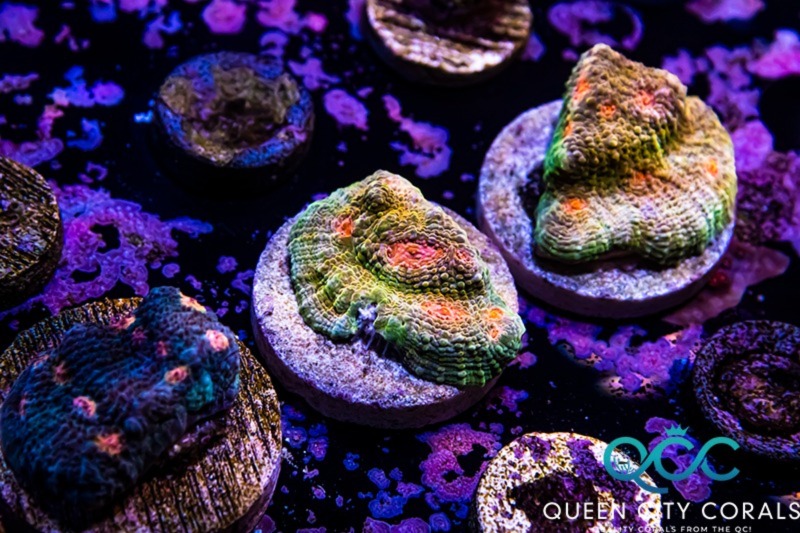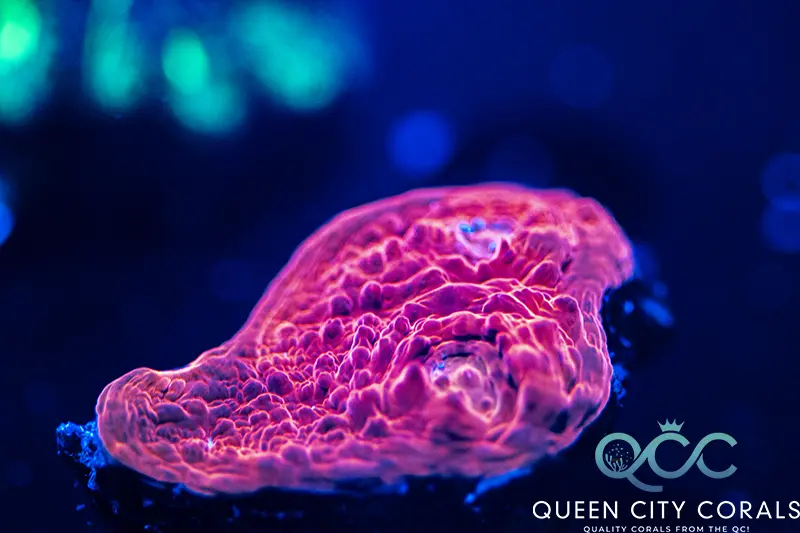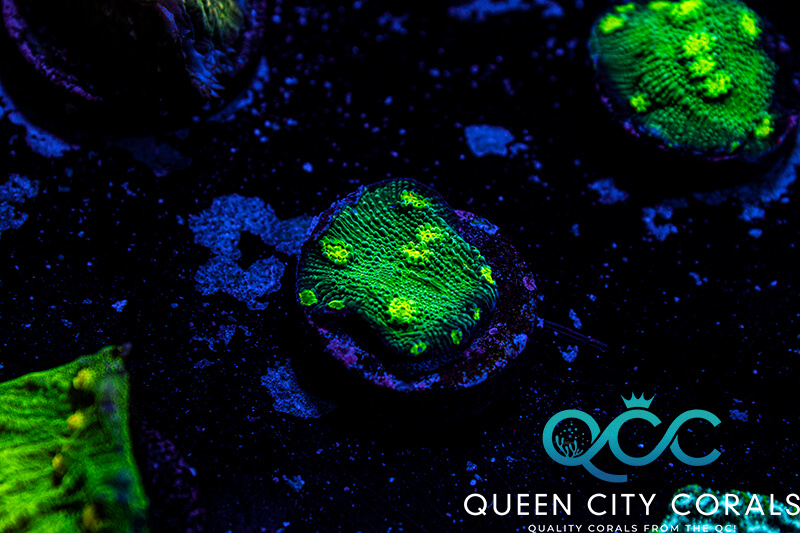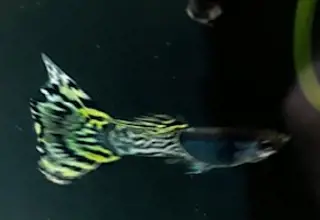Chalice Coral: Care, Appearance & Types, Growth Rate & More
Posted by on 01/10/2023
Fact checked by
While maintaining a reef aquarium has its challenges, it also produces some incredible rewards. Witnessing the vibrant colors of coral in the comfort of one's own home can be an awe-inspiring experience.
Hobbyists often debate about which corals are the most striking, and chalice corals consistently rank among the most vibrant and sought-after in the hobby.
If you’re considering adding a chalice to your reef tank, you’ll want to be well-versed in its care. In this blog post, we’re going to give you all the knowledge you need to decide whether or not a chalice coral is right for you.
Species Summary
Chalice corals earned their name from the cup-shaped colonies that form from their thin calcium skeletons. These corals were once considered to be any of the many species that fall under the Pectiniidae family of corals, which includes the following genera: Oxypora, Mycedium, and the most popular - Echinophyllia.
However, these genera have since been re-classified by the World Register of Marine Species . Oxypora and Echinophylliahave have been reclassified to fall under the Lobophyllidae families, and Mycedium has been re-classified under the Merulinidae family.
Since some hobbyists aren’t aware of the reclassification, it’s common to see chalices listed as Lobophyllidiae, Merulinidae, and Pectiniidae corals. Chalice corals have been scientifically documented since the 1800s and can be found in the wild throughout the Indo-Pacific region, where they are sourced from Fiji, Australia, Vietnam, and Indonesia.

Size
Chalice corals can grow to be quite large, in the wild, chalice coral colonies can grow to be over 2 feet across.
While it is uncommon to observe such large specimens in a home reef aquarium, a chalice coral measuring one foot in length is considered to be quite large by most hobbyists and can be attained with proper care and nutrition.
Growth Rate
The growth rate of a chalice coral is species-dependent and often correlates to the size of the coral's skeleton. Chalice corals with thin skeletons tend to grow rapidly and can double in size every 4 months or so.
Chalice corals with thicker skeletons will take much longer to grow, growing only about a ¼ inch per month.
Appearance & Types
Chalice corals are typically quite flat, making it no surprise that hobbyists often refer to them as plate corals. They have a flat skeletal structure, with a thickness that varies between species. One of the most defining features of chalice corals is their brightly-covered mouths, which look like small eyes.
Chalice corals are known for their exotic names. If you’ve browsed the websites of coral retailers, or checked out our coral section, you may have come across a wide variety of different names. Still, some chalice coral species are more frequently seen in the reef-keeping hobby.
Miami Hurricane
The Miami Hurricane Chalice is a popular chalice coral, which derives its name from the green and orange colors of the University of Miami's football team.
This species of Echinophyllia boasts a striking coloration of green with bright orange eyes. It’s an affordable coral and is typically sold between $30-$100 depending on size.

Mummy Eye
First acquired by Reef Farmers , this Echinophyllia species is recognized for its distinctive yellowish-green body and contrasting orange and pink mouths.
It is a popular choice among coral hobbyists due to its hardy nature and fast growth rate and has been sold for $50-$150.

Red Lava
The Echinophyllia Aspera color variant, known as the Red Lava Chalice, boasts a striking coloration that resembles molten magma.
With a predominant red body and yellow-pinkish mouths, its appearance can vary depending on the type of lighting used. Known for its eye-catching appearance, the colors of this coral contrast beautifully with other coral species, such as torches.

Hollywood Stunner
Echinopora Lamellosa is often recommended to beginner hobbyists for a reason - it’s incredibly easy to care for.
The coral's fragile plate makes it easy to frag, and it can grow at a rapid rate once it is acclimated to a well-maintained environment. With its striking green color and neon-green mouths, this coral adds a vibrant touch to any reef tank and is an affordable option, typically costing between $20-$30.

Ludicrous Chalice
The Ludicrous chalice is one of the most highly sought-after coral varieties in the hobby due to its striking rainbow coloration, which gives it an otherworldly appearance.
It was only introduced to the hobby as recently as 2017 and is in high demand - resulting in a premium price tag. Hobbyists can be expected to pay around $3000 for a small frag measuring just a few inches in size.
Chalice Coral Care
Chalice corals are generally easy to care for and can adapt to most water conditions. The key to successfully keeping these unique-looking corals in a reef tank is maintaining consistent water stability throughout their lifespan.
As with any coral, it is essential to have a thorough understanding of its care requirements to ensure its health and well-being.
Tank Size
We recommend an aquarium that’s at least 40 gallons in size if you plan on keeping a chalice coral. While technically any sized tank may work, larger tanks provide more room for the plate-like growth that some chalice corals exhibit.
Larger tanks tend to be more stable, and stability is important for the survival of chalice corals.
Water Parameters
Chalice corals are relatively adaptable when it comes to water parameters. While they can tolerate small amounts of nitrate and phosphate, extremely high levels can impede their growth, and you’ll want to take take steps to lower them.
Aim for the following:
Specific Gravity: 1.023-1.025
Temperature Range: 72°F-78°F
KH: 8-12 dKH
pH: 8.1-8.4
Calcium: 400 ppm
Magnesium: 1250-1350 ppm
Phosphates: 0.0.3ppm-0.25ppm
Nitrate: 5-10ppm
Maintaining these water parameters will ensure the success of your chalice corals.
Tank Setup
Before purchasing a chalice coral, you’ll want to make sure your aquarium is set up correctly.
Luckily, setting up an aquarium for a chalice coral is straightforward.
Placement
When positioning chalice corals in your aquarium, it is important to keep them away from other corals, including other chalice coral species, as their fast growth rate and long sweeper tentacles can attack neighboring corals.
Chalice corals can be placed directly on the sand bed as long as the sand stays off the coral’s tissue. They can also be placed on a rock, or placed in a temporary position on a frag rack.
Lighting
Chalice corals prefer low to medium light, between 100-200 par. Having lighting that's too intense can result in bleaching .
They’re also known to be the most fluorescent in the hobby, and look outstanding under actinic bulbs, such as the T5 True Actinic bulbs .
Flow
Chalice coral species prefer low to moderate flow. You’ll want to aim for just enough flow that uneaten food or detritus will be blown off the coral.
Too much flow can also be problematic and can have a detrimental effect on the coral’s growth rate. Adjustable powerheads like those from ecotech marine can be used to dial in flow rates. If you do not own an adjustable powerhead, you can position your coral behind live rock, so that it’s out of the direct line of flow.
Feeding
Chalice corals contain photosynthetic cells, called zooxanthellae that live in their tissue. These cells use carbon dioxide produced by a chalice coral's polyps to photosynthesize. During photosynthesis, the cells produce sugars, lipids, fats, and oxygen, which the coral uses to grow.
This photosynthetic process means you don’t need to directly feed your chalice corals, but if you want to accelerate their growth, you can feed products such as Reef Roids .
Behavior
Chalice corals are known for their aggressive nature. Many chalice coral species have sweeper tentacles that extend beyond the coral and attack other coral species. They are also known to be aggressive towards their own species, making it difficult to create a chalice coral garden as one can do with other coral species such as zoanthids.
These corals show little movement that can only be revealed with the aid of a time-lapse camera.
Fragging
Fragging plating chalice corals, such as the Hollywood stunner, is relatively simple. To do this, break off a small piece of the coral, and securely attach it to a frag plug using coral glue. With proper care, the fragment should begin to grow in a relatively short period of time.
Fragmenting thicker chalice corals is more challenging and may require the use of specialized tools such as stainless steel coral snips, scalpels, and a turkey baster. To frag thicker chalice coral, use the scissors to cut through the coral skeleton around the eyes. If necessary, use a scalpel to create a clean separation from the tissue.
Next, prepare a small amount of coral glue on a ceramic disc and use the turkey baster to cover the coral in tank water. This will help set the glue and prevent it from rising and covering the coral tissue. Quickly dip the coral fragment in an iodine solution to prevent infections before rinsing it in a bucket of tank water. Finally, place the frag on a frag rack or back in the main display tank.
Tank Mates
Chalice corals look excellent with other corals, such as brain corals and torch corals as long as there's enough space between them.
Given an appropriately sized tank, additional stocking options include:
Avoid Butterflyfish and Angelfish, as these species are known to pick at corals.
Conclusion
Chalice corals are a popular choice among hobbyists due to their vibrant coloration, ease of care, and propagation. As a result, they are frequently available for sale in the hobby.
If you have experience with keeping chalice corals, we welcome your insights and feedback. Share your thoughts in the comments, and also check out our marketplace and community forum where you can connect with other reefkeepers and buy or sell chalice corals.
December's Giveaways on Light Fish








